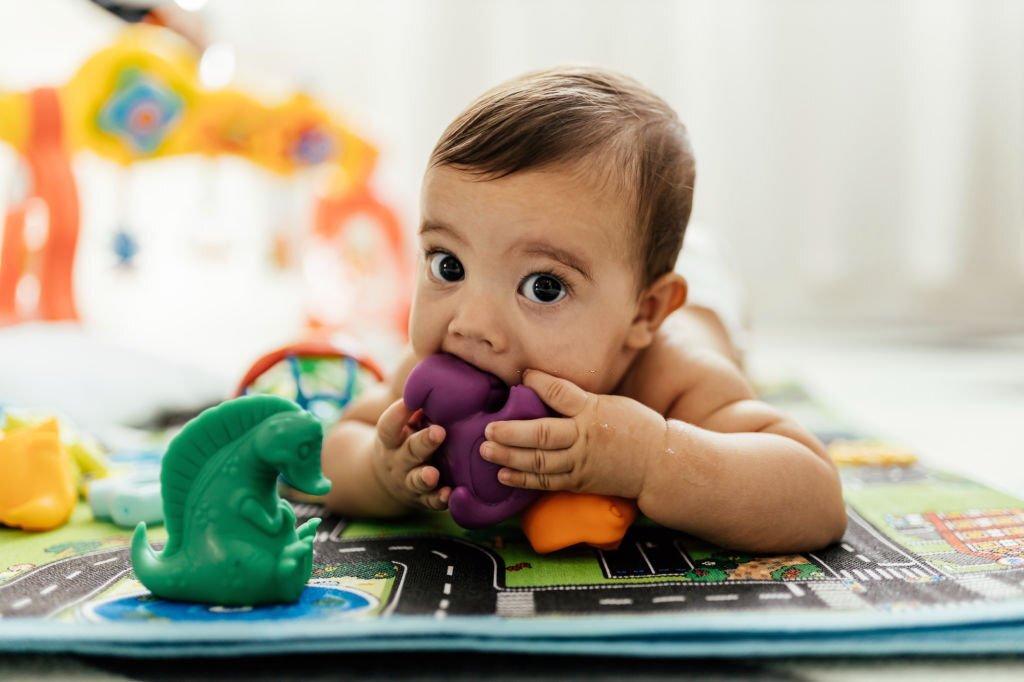The Benefits Of Baby Rattle Toys: How They Help Your Baby’s Development
Lifestyle
Toys, including children’s garden toys, rattle toys, and car toys, are essential to a child’s growth. These toys help a child’s overall development by increasing hand-eye coordination and cognitive skills. Let’s take a closer look at the advantages of these gadgets. Baby rattle toys provide more than just amusement. Learn how they may help your baby’s development and give a variety of benefits for their growth.
Enhance Sensory Development:
Baby rattle toys are excellent for stimulating newborns’ sensory development. The rattle’s tone can assist in exciting their hearing, while the vivid colours and diverse textures can help stimulate their sight and touch.
Kids are improving their hand-eye coordination and fine motor abilities as they shake the rattle and experience the varied textures. Furthermore, gripping and holding the rattle can strengthen their grip and enhance their general dexterity.
Improve Hand-Eye Coordination:
One of the primary advantages of kids’ rattle toys is that they help newborns strengthen their hand-eye coordination. They are learning to monitor items with their eyes and coordinate their hand motions as they shake the rattle and watch it move.
This ability is necessary for many everyday tasks, including reaching for items, playing with toys, and writing and sketching later in life. By giving your baby a variety of rattles and toys to play with, you can help them learn this vital ability and set them up for future success.
Encourage Cognitive Development:
Children’s rattle toys can help with cognitive development and enhance hand-eye coordination. Babies learn about causes and effects, object permanence, and spatial relationships as they explore and engage with their rattles.
These abilities are needed for later-life problem-solving and critical thinking. You can help your infant develop these skills and set them up for future success by giving them exciting toys.
Promote Language Development:
Baby rattle toys can also aid language development. Babies may begin to chatter and produce noises while they shake and play with their rattles, which is a critical stage in language learning. Parents may also use the rattles to encourage their newborns to imitate sounds and words, which will help them improve their language abilities even further.
Parents may improve their kids’ language development and set them up for communicative success by introducing baby rattle toys into playtime.
Provide Comfort And Security:
Kids’ rattle toys can also give babies comfort and assurance. The rattle’s quiet, gentle tone helps soothe and calm a fussy infant, allowing them to rest and feel comfortable. Furthermore, holding and playing with the rattle can offer newborns a sense of familiarity and comfort, especially during stress or transition.
Parents may make their newborns feel more confident and comfortable in their surroundings by introducing baby rattle toys into their daily routine.
When Is It OK For An Infant To Use A Rattle?
Babies approximately 2 months old appear pleased to see carers and grin when they chat or smile. They also begin to open and close their fists at that time. This implies that they may be able to grip a rattle in their hands. They’ll quickly realise they’re the ones who make the toy rattle!
How Long Do Newborns Play With Rattles?
During the first year, your kid will progress from rattles to stacking toys, but one thing will remain constant: The box will always be his favourite toy. Provide them with toys such as giant rings or rattles that they may shake in their hands to produce noise.
Brightly coloured stuffed toys assist children in becoming acquainted with their surroundings and experimenting with different textures. Squeeze toys assist kids in learning different sounds.
Conclusion:
Rattle toys improve the baby’s fine motor skills by fostering different gripping abilities. They capture and maintain the baby’s attention, enhancing cognitive development. Babies notice the rattle sounds as they move their hands and begin to learn the notion of cause and effect.





